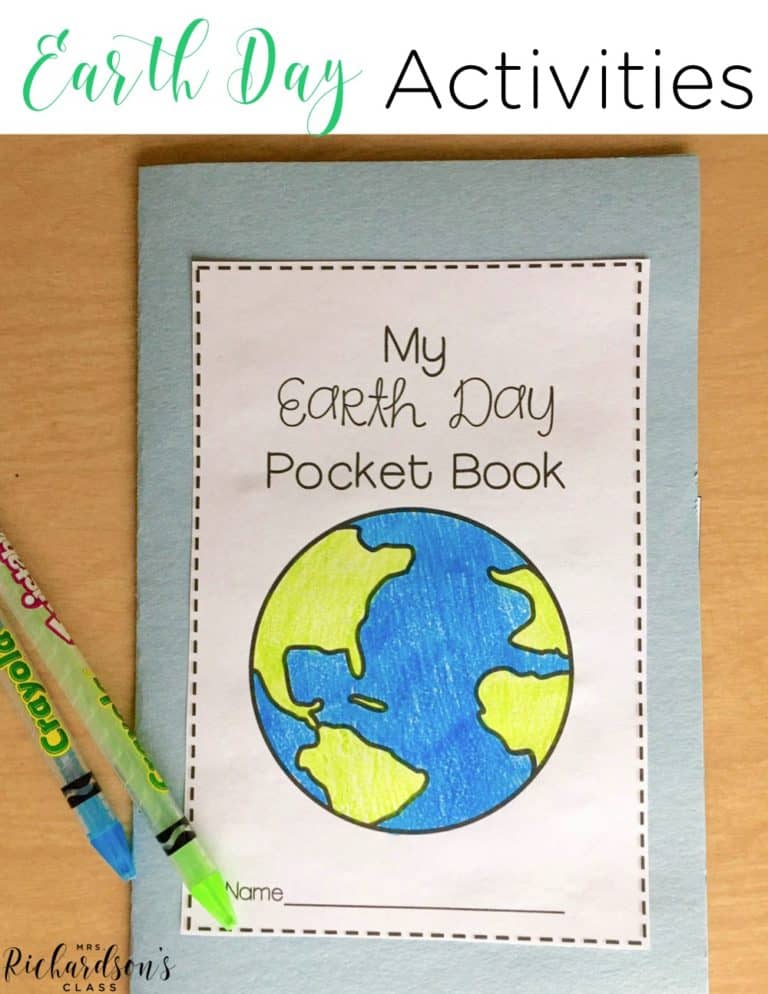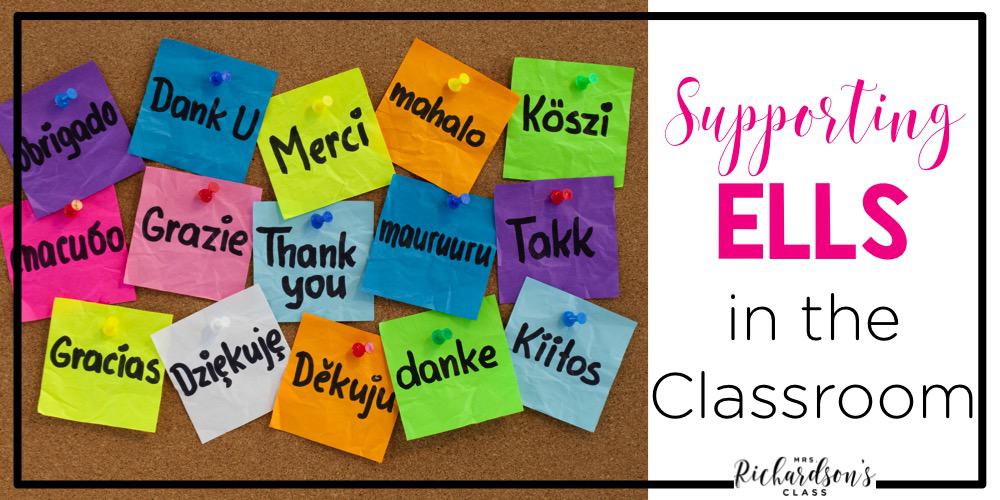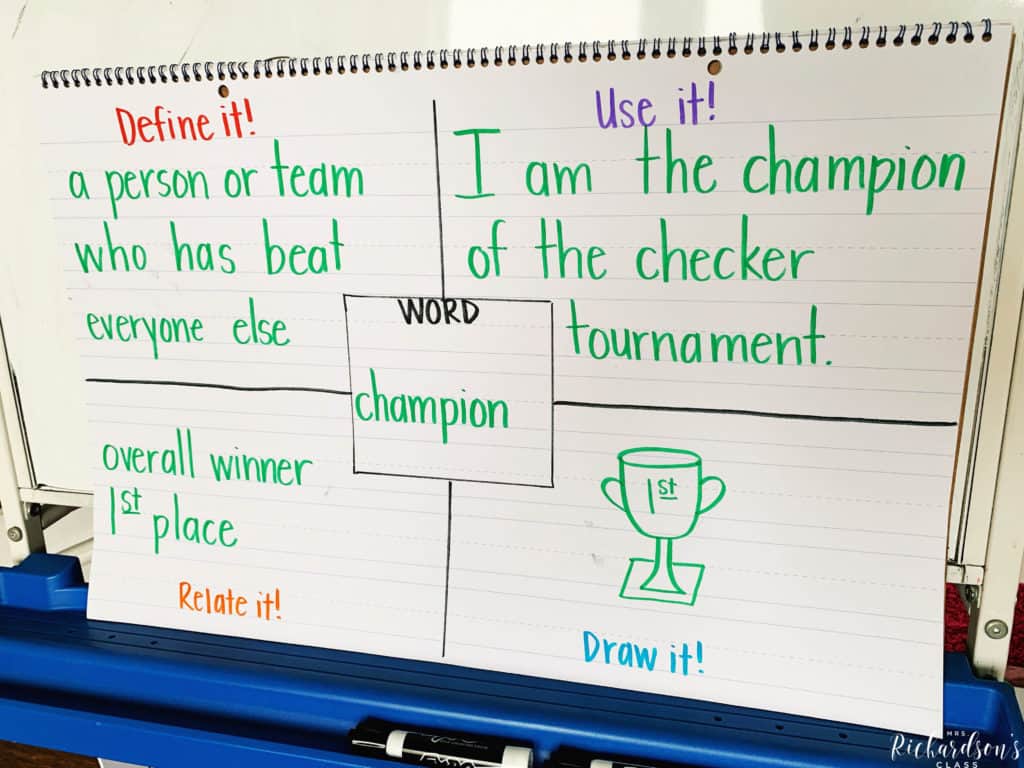

There’s a growing population of English Language Learners (ELLs) in our classrooms now more than ever. These students already have one (or more) language down and are trying to learn another. WOW!! That is something big to be celebrated for sure! One misconception is that teachers of ELLs have to stop and completely change how they teach everything. Here’s the good news – you don’t! But, there are some strategies to include and practices you could tweak to make them more conducive to these students. Here are a few ways you can start supporting ELLs in the classroom.
Sentence stems are simply incomplete sentences that you begin for students to finish. They can range from simple to complex, verbal to written, and academic to social. By giving students a framework for sharing, you show them correct sentence structure and give them a chance to practice. Also, it allows them time to think about the content of their responses. Some simple examples during a read aloud could be…
“I liked/disliked the ending because…”
“My favorite character was…because…”
“I would like to know more about…”
“Another way to solve the character’s problem would be…”
You can read more about sentence stems and partner talk HERE.
Offer some sort of visual aide anytime you can during lessons, for directions, and to teach expectations. In kindergarten, you might even have visuals for color, cut, glue, and write types of directions. For science experiments, have pictures for each step of the experiment along with written directions. If you’re teaching a poem, maybe use a puppet or different pictures to help support various new words. When teaching classroom expectations, try to have a photograph of students demonstrating what the expectation was next to the written one. I did this often with writer’s workshop expectations! Another great way to provide visual support is through thematic word walls with photos or pictures for math, science, or social studies. Finally, visual support also means modeling. Showing students what to do can have a strong impact on understanding what to do. I like to do a lot of, “Watch as I….”
Most primary grade classrooms already do this, but be intentional to include a variety of opportunities for students to listen, speak, read, and write. This can include anchor charts, music, read alouds, and writing in math and science notebooks. These things, plus all of the literacy stations you might already do, will give your ELLs practice with authentic language and keep them engaged while doing it.
Group work provides ELLs opportunities to use academic language with their peers. Speaking in small groups can feel less intimidating, so you might be surprised to see an ELL talk more than in a formal whole-group setting. Group work also naturally has social conversation opportunities build in. This could be the setting when your ELLs will talk the most in the classroom.
The silent period is a period of time when a student is unable or unwilling to speak in the language that is new to them. Personally, I saw this more at the beginning of the year or with students who joined our class after school started. It depends on personality, but it can range from a few days to a few months. Respect this time by letting them listen and observe. They will begin to talk more when they feel safe and confident to do so.
Playing games is a great way to get students to interact with each other and practice using new vocabulary. Hands-on experiences also give all students, but especially ELLs, the chance to make a physical connection with new words. For example, in science, you might teach a new concept, introduce a song that reinforces the new learning, have students complete an experiment, and then write about the experiment in interactive notebooks. This is giving your students several different ways to process, understand, and successfully learn new content.
In each content area, take time to teach vocabulary and check for understanding. Introduce the word, define it, use it in sentences, and provide visuals. Then allow students to practice using it and illustrate it. Sentence stems come in handy for teaching vocabulary!
One method I used when I taught two-way dual language was the graphic below. We would write the word in the middle, then define the word, use it in a sentence, illustrate it, and then write words that were synonyms. 
Don’t forget to integrate the new words throughout the day when you can build in opportunities.
We want to make sure our ELLs understand everything from seemingly simple directions to heavy lesson content throughout the day. Besides more formal testing, you can also use non-verbal cues like thumbs up, thumbs down, or thumbs sideways (for “not sure”). It’s important to make sure ELLs know that it’s completely okay to let you know they didn’t understand something. As you consistently check for their understanding, they’ll become more aware of monitoring their learning, too.
We want our ELLs to be learning, understanding and applying language skills at high levels so they will be as successful as possible. Most kindergarten and first-grade students are all learning academic vocabulary together, so most of these strategies for your ELLs will also benefit the rest of your students. If you have any English Language Learners in your classroom, take a few minutes to see if you can add a strategy or two to your classroom to help them become more comfortable and successful. Supporting ELLs in the classroom might be easier than you thought!
pin it

Want to use the latest research to boost your readers during small groups? This FREE guide is packed with engaging ideas to help them grow!

I’m a K-1 teacher who is passionate about making lessons your students love and that are easy to implement for teachers. Helping teachers like you navigate their way through their literacy block brings me great joy. I am a lifelong learner who loves staying on top of current literacy learning and practices. Here, you’ll find the tools you need to move your K-2 students forward!


| Cookie | Duration | Description |
|---|---|---|
| cookielawinfo-checkbox-analytics | 11 months | This cookie is set by GDPR Cookie Consent plugin. The cookie is used to store the user consent for the cookies in the category "Analytics". |
| cookielawinfo-checkbox-functional | 11 months | The cookie is set by GDPR cookie consent to record the user consent for the cookies in the category "Functional". |
| cookielawinfo-checkbox-necessary | 11 months | This cookie is set by GDPR Cookie Consent plugin. The cookies is used to store the user consent for the cookies in the category "Necessary". |
| cookielawinfo-checkbox-others | 11 months | This cookie is set by GDPR Cookie Consent plugin. The cookie is used to store the user consent for the cookies in the category "Other. |
| cookielawinfo-checkbox-performance | 11 months | This cookie is set by GDPR Cookie Consent plugin. The cookie is used to store the user consent for the cookies in the category "Performance". |
| viewed_cookie_policy | 11 months | The cookie is set by the GDPR Cookie Consent plugin and is used to store whether or not user has consented to the use of cookies. It does not store any personal data. |
11 Responses
Great post, Amanda! These are excellent reminders!
Thank you so much, Maria!! That means so much coming from an expert like yourself!! <3
What a great post! These are important strategies for any classroom with English learners. Thank you for sharing.
I really like your post. I will use them in my classroom. I teach English as a Foreign Language. I also teach content base subjects; Science and Maths and English is the language of instruction.
Great article is it possible to download this as a pdf, so I may share with my MLL co-teachers?
Hi Rosely, I don’t think you can download it as a PDF. I’m so sorry! But you are welcome to share the URL with your co-teachers!